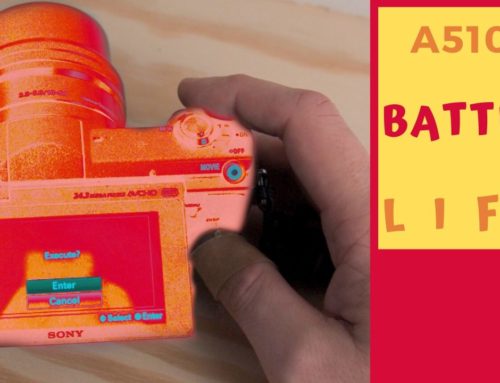The best way to store unused, and unopened Instax film is inside it’s original sealed, foil package. The best location to store your unused film is in a temperature controlled environment like your home. The optimal temperatures to store Instax Film is between 41° F and 104° F.
The best way to store developed photos is away from exposure to direct sunlight. Consider a box or a photo album with sleeves designated for your film size. The temperatures above also apply to developed photos.
How to store Instax film that is unused, and unopened ?
The biggest potential threats to your undeveloped Instax film is:
- Sunlight
- Moisture
- Temperature
How do you store Instax film unused, and unopened ? The best way is of course to just keep the unused film in its original carton, and foil packaging that is sealed.
This is going to keep the film safe from the most common threats to your film.
I store my film cartridges on the top shelf of my photography storage shelf. I do this for a couple reasons.
First, I know exactly where the film is. It’s in an a location that I access frequently. This helps me to know how much film I have as well.
Second, if my work area does get flooded my film is way off the ground to avoid getting soaked and wrecked.
How to store Instax film opened and in use ?
The best place to store the opened and in use Instax film is to keep it right in your camera. And, then keep your camera in a cool dry place.
The biggest threats to the film that is in your camera is light. The worst thing you can do to your film cartridge that is in use it try and remove it from the camera.
A fresh cartridge has a dark slide on the pack. This slide prevents light from exposing the film. When we load this cartridge in our camera, and turn it on the camera ejects this dark slide from the pack. The film is now fully vulnerable to light. Even the slightest amount of light can wreak havoc on the photos.
If light does get into your opened film cartridge at best you can expect some light leaks. Light leaks can be pretty creative and add a very unique draw to a photo. However, this is best under controlled situations. Pointlessly opening your film door is not a way to add light leaks. That is a good way to waste your film.
The most likely outcome for your film after opening the film door is to have all your photos completely overexposed. Maybe some of these photos would be worth keeping, but probably not.
The worst case scenario that can come from opening your film door is to completely exposure your film. This will leave all your photos completely white, and not worth keeping.
How to store Instax developed photos?
The most common threats to damaging our exposed photos is:
- Physical damage
- Direct sunlight
- Moisture
- Temperature
Prevent physical damage
There are all sorts of potential threats to physically damage your photos. From kids to dogs, and coffee and maple syrup. Literally, countless.
While you can easily make a digital scan of your photo using the Google Scan app, or a good scanner there really is not substitute for the real physical photo. After all, that’s one of the main reasons we love Instax photos. It’s physical, tangible, and real. Lets keep them safe.
Prevent damage from direct sunlight
Direct sunlight to our developed photos isn’t as threatening as while the photo is developing, but it does continue to pose a threat. Sunlight will fade all photos, and prints of every kind with time.
While it is true that this could take awhile, it is also true that you want to keep your photos for just as long. And, the only way to do that is to keep them safe from direct sunlight.
Prevent damage from moisture
Another threat to your Instax photos is moisture. I know you’re not going to leave your instant photos out in the rain. But, are you storing them somewhere you know is prone to moisture?
Think back to all the photos over the years that you’ve seen damaged, and plagued with the smell of mildew. These are photos of days gone by, and people that meant something to you or a loved one. They’re pretty much only good for keeping in the basement, or storage unit.
Moisture can come from wet basements, to leaky roofs. The best place to avoid moisture is of course off the ground, and in an area that you know has not history of getting damp, or worse flooding.
Prevent damage from temperature
Temperature can damage you Instax photos as well. The ideal temperature for your instant photos is between 41°F and 104°F.
All in all, hopefully this is well within the temperature range of your home, and with a margin of comfort. I know that the summers without air conditioning can creep towards the upper range. A brief time outside the ideal range is acceptable, as long as it’s not extreme.
The extremes are going to be outside your house. Don’t leave your photos in the car! This goes for developed, and undeveloped film. Cars are not a proper storage place for your photos!
Why store photos and film properly?
The obvious answer is, because of the financial investment. Each photo comes with an expense. It’s part of the hobby, and worth the cost.
But, consider the investment of time that is also involved.
If you’re brand new to photography, or a seasoned pro each shot you take is a culmination of your entire history as a photographer. All the YouTube videos watched, blog articles read (Thanks, by the way!). They are all tied to every single photo you take.
Look back at your first attempts at taking a photo. Whether it was with your Iphone, or the old disposable 35mm cameras. Look at the progress between your oldest photo, and your newest. Never again will you take a photo like the earliest, or the one you took yesterday. Each time you press the shutter you progress as a photographer. It’s pretty awe inspiring to think about.
There’s a story of Picasso doodling on a napkin at a coffee shop. Picasso doodles away for a few minutes while waiting for his drink. When his drink arrives he throws the napkin with his drawing in the trash.
The barista notices and asks for the drawing. Picasso pulls it out, and to the barista’s surprises offers to sell her the napkin for a sum of money.
The barista explains her point of view. It’s a doodle on a napkin that only took you a few minutes to draw.
Picasso goes on to explain his point of view. That drawing has taken him a lifetime to draw. He folds up the napkin and takes his leave.
The point, like the napkin story with Picasso is your photo is an extension of you. A part that can accurately describe where you are right now on your photo journey. One that if you’ve stored your photos correctly can be a journal, of sorts through the years.
How should you store your Instax photos?
The best and easiest way to store your instant photos is in either an photo album, or a photo box.
Both of these options will ensure that your photos are safe from damage, moisture, sunlight, and temperature variances in your home.
If you’re looking for an album for Instax Wide photos: https://amzn.to/2QneOa3
If you’re shooting Instax Square and you’re looking for an album: https://amzn.to/3vRZ8G8
If you’re shooting Instax Mini this is the album I personally use: https://amzn.to/3OcLlAt
I personally choose to store my photos in an album. This allow me to quickly look through them when I want to. I also keep them in chronological order. It may not be the most practical, however, it is my system. I use the same order structure in my digital workflow.
I don’t think I’ll need a storage box anytime soon. I also do not keep the photos that didn’t turn out. Once again I know that’s not the normal approach, but it is mine.
Whatever your choice is for storing, and organizing your photos be sure to own it. Take care of those photos.
Thanks again for reading.





